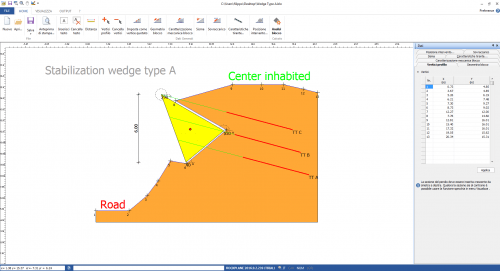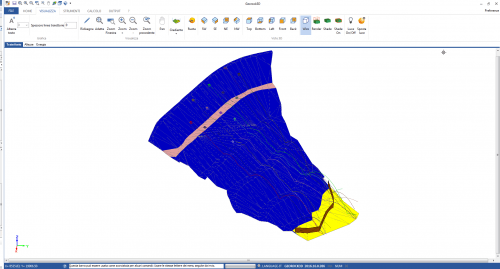Description
Barton Q System
It calculates the Q index, the class and the quality of the rock mass etc., by entering the index values of the RQD (Rock Quality Designation), Jr (Joint Roughness Number), Jn (Joint Set Number), Ja (Joint Alteration Number), Jw (Joint Water Number), SRF (Stress Reduction Factor) and the uniaxial compression strength.
Romana and Beniawski’s classification
Thanks to this classification, it is possible to calculate RMRbase, RMRcorrect, class and quality of rock mass, deformation module, Geological Strenght index, cohesion and friction angle by the input of numerical values A1, A2, A3, A4, A5, A6 (arising from rock strength, RQD index, discontinuity spacing, humidity, correction index for the discontinuity inclination, respectively).
Modified RMR classification
Sen and Kazi (1984) changed the steps to calculate RMR but not the classification of rock masses. They proposed calculating the correct RMR using a simplified equation that exploits the RQD values, rock resistance, joint spacing, and hydraulic conditions. If it is not possible to carry out surveys, instead of RQD, the value of the average number of joints is introduced. Once the correct RMR value has been calculated, the values of the class and the quality of the rock, the cohesion and the friction angle are obtained.
Robertson classification
This method, known as SRMR (Slope Rock Mass Rating), derives from the RMR of the Beniawski Classification and is applied only to the stability of the rock slopes with SRMR values <40. The SRMR value is calculated by adding the first four parameters used for the calculation of RMR. Once the SRMR value is obtained, the program calculates the rock masses’ class, quality, cohesion and friction angle.
Singh and Goel’s classification
This method derives from the Barton classification, and it is applied for the study and construction of tunnels by using the values of RQD (Rock Quality Designation), Jr (Joint Roughness Number), Jn (Joint Set Number), Ja (Joint Alteration Number), Jw (Joint Water Number), N (Rock Mass Number) and RCR (Rock Condition Rating).
Jasarevic and Kovacevic classification
This classification was developed on the carbonate formation of Croatia; it derives from RMR and Q systems. Three coefficients, at least related to geomechanical properties, are used for this classification. For each of these parameters, values are assigned. Finally, the N index, correct, class, quality, cohesion, friction angle and deformability modulus of the rock mass are obtained.
Stability along a plane
It analyzes the stability conditions of a block separated by a discontinuity (with a lower inclination) from the slope. The analysis is conducted by researching the equilibrium conditions of the acting forces. The calculation is performed in the absence or presence of an open traction fracture in the upper part of the slope, in the absence or presence of an earthquake, in the absence or presence of water, and in the absence or presence of external forces. Furthermore, the program allows stability analysis on both fronts with a flat upper part and an inclined upper front.







